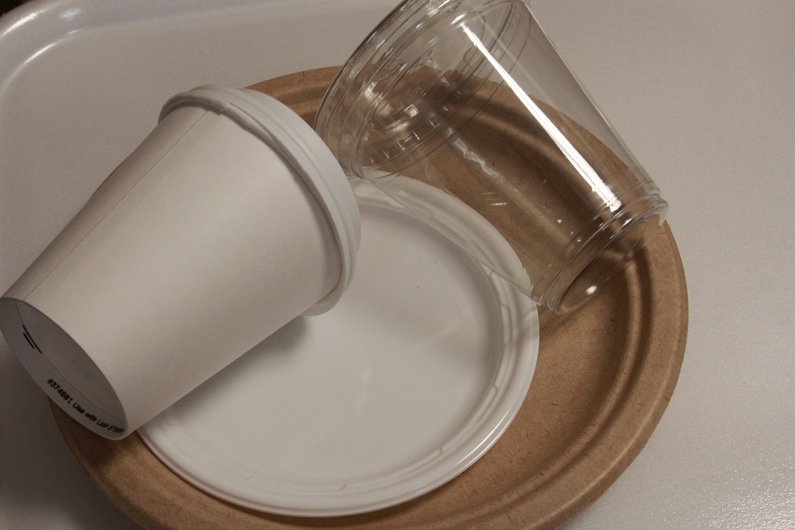New ergonomic tray system and biodegradable products debut

Annie Cichocki has been up all night arranging the food preparation area for the nutrition staff. The move toward an ergonomic tray system is complicated and tedious, but this is an initiative that she believes in. Cichocki, the chief of the NIH Clinical Center's Nutrition Department, looks at the line the trays move down.
Everything is in place; all food is within an arm's reach. The plan was to create less physically challenging food preparation space - free of bending, twisting or stretching to reach items.
The inception of a better experience for those prepping food for patients began in 2019. One of the primary goals was to have fewer workplace injuries by reducing the range of motion staff needed to do while performing their duties. High-use items such as cups and plates were rearranged so they are easy to reach. The process involved also uses less on-hand daily supplies, reducing waste and helping to ensure high food quality.
But as with any worthwhile change, growing pains are inevitable. For the system to work effectively, employees must make fundamental adjustments to their routine practices. Rather than getting everything themselves, there needs to be 'runners' servicing the line who replenish stock as it gets used.
Another large-scale improvement happening in Nutrition is the upgrade to biodegradable cups and plates. This process of switching to a more environmentally friendly set of materials cannot be done overnight however. The Clinical Center will use up the current surplus of resources before the transition to earth friendly materials will be in full effect.
"With all of the various bans on Styrofoam throughout the nation, it became clear that the switch to compostable products is well worth the added expense. Our decision to move to recyclable materials is an investment for the environment and we want to do our part in preserving our environment and ecosystems," said Cichocki.
- Daniel Silber